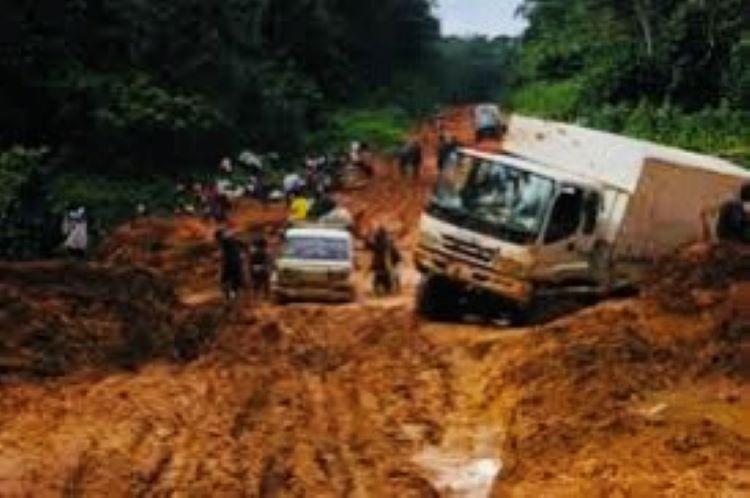Africa-Press – Liberia. A Public Policy and Software Systems Engineer and a Socioeconomic Development Advocate:
Liberia, our domicile, is known for its rich history and natural beauty and is at an infrastructural crossroads.
Ensconced in the dense shade of the Mano River Union, the nation has long endured the vestiges of a challenging past that has hindered its infrastructural development, chief among these challenges is the state of its road networks.
Evolving Liberia’s transportation infrastructure is paramount to unlocking the hinterland’s economic potential and aligning with global development trends.
This parley argues for Liberia’s crucial need to construct four separate lanes for roads leading to the hinterland. Thus, Liberia will transition from an outdated transport system to one befitting the 21st century, a metamorphosis from a constrained past to an unbound future.
The Current State of Liberian Roads
Traversing the Liberian countryside reveals a grave reality.
A reality where the veins that should invigorate the national economy are choked.
Single or double-laned roads, when present, are often riddled with potholes and susceptible to erosion.
During the rainy seasons, these thoroughfares often become impassable morasses that sever the flow of trade and commerce, isolating regions, stifling economic activities, and complicating the delivery of urgent services to those in need.
This primitive or medieval infrastructure state hampers progress and perpetuates the cycles of poverty and underdevelopment.
Economic Impetus for Expansion:
Economically, the rationale for quadruple lanes to the hinterland is incontrovertible.
The hinterland, a reservoir of untapped resources and fertile grounds for agriculture and mining, requires robust infrastructure to facilitate the movement of goods, workers, and investments.
Presently, the inefficiencies of the road network usher in elevated costs of transportation, which, in turn, inflate the prices of goods and decrease the competitiveness of Liberian products in the global marketplace.
Moreover, the advent of quadruple lanes would alight a beacon of commerce that beckons regional trade.
Neighboring countries would find a conduit for transit trade in Liberia, further diversifying the Liberian economy and integrating it within the regional economy.
The more accessible and navigable the country, the more attractive it becomes to foreign direct investment.
A catalyst for job creation, technology transfer, and sustained economic growth.
Safety and Accessibility
The humanitarian case for this infrastructural expansion is equally compelling.
The infrequency of separate lanes for each direction of traffic is the progenitor of accident fatalities that could otherwise be avoided with better road design.
Indeed, the development of quadruple lanes, with median dividers ensuring a physical barrier between opposing traffic flows, promises a reduction in head-on collisions.
Furthermore, accessibility in times of emergencies must be uncompromised.
Medical emergencies, natural disasters, and other critical situations demand prompt response, something the current road system cannot guarantee.
The upgrade to a four-lane system is not merely a luxury but an exigency that could mean the difference between life and death for the inhabitants of remote areas.
Sustainable Development and Environmental Considerations:
Sustainable development underscores the importance of future-proofing Liberia’s infrastructure.
Quadruple lanes designed with modern environmental considerations can mitigate ecological impacts, incorporating features like wildlife crossings and eco-friendly materials to preserve Liberia’s lush biodiversity.
The move toward a broader road network must walk hand in hand with environmental stewardship, accounting for both the growth of human settlements and the preservation of nature.
Political Will and Visionary Governance:
Embarking on such an ambitious project demands strong political will and a visionary governance approach.
For long, Liberia has grappled with the specters of political instability and resource mismanagement that have hindered infrastructural advancements.
To move forward, the Boakai-Koung leadership must be decisive, transparent, accountable, and forward-thinking and must direct the country through this transformative process.
This would signal to the Liberian people that their welfare is a priority and showcase to the international community Liberia’s resolve to step into modernity.
The 21st-century Beckons:
As the world marches into the digital age, good physical infrastructure remains a cornerstone of any nation’s development agenda.
Liberia cannot afford to be a bystander in this era of global connectivity.
The construction of quadruple lanes to the hinterland would symbolize Liberia’s commitment to keeping pace with the world’s progression.
It would ensure that Liberia does not merely aspire to join the 21st century of road networks and other infrastructural development but actively takes strides towards it.
Let us understand that our nation, Liberia, stands on the precipice of change.
To foster sustainable economic growth, improve safety and accessibility, and ensure the well-being of its citizenry, Liberia must embrace the construction of four separate lanes for roads leading to the hinterland.
Such development would mark the country’s graduation from a past defined by infrastructural inadequacy to a future where road networks serve as conduits of prosperity and integration.
Thus, Liberians must rally behind, and the international community must support, this stride toward the evolution of a road system embedding the country firmly within the matrix of a rapidly developing world and endowing its populace with the dignity of modernity that they rightfully deserve.
For More News And Analysis About Liberia Follow Africa-Press






